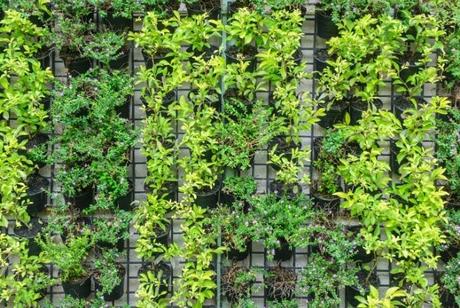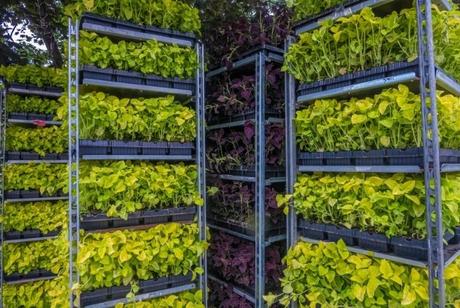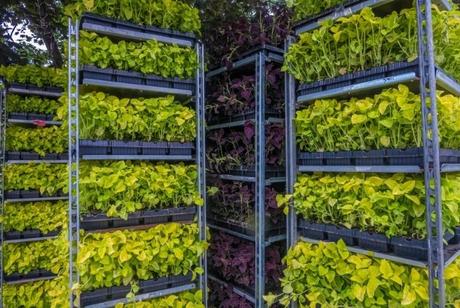What is Vertical Farming?
If you’re a farming or gardening enthusiast, there are a couple of things about Vertical farming you should definitely know about. While there are many ways to define this novel mode of farming, in the simplest terms, Vertical Farming is a practice where food is produced in fairly inclined areas. Unlike conventional farming where crops are planted at a single level, this unique method helps produce food in vertical and completely stacked layers that are also well-integrated to multiple structures like shipping containers or skyscrapers.
Leveraging the Controlled Environment Agriculture Technology, this modern farming technique makes the most out of indoor farming methods. This method involves artificially controlling the temperature, regulating the light, and controlling the gases, all of which can be done indoors. That is also the reason why many farmers find Vertical Farming to bear multiple similarities with greenhouse farming. The main goal of this farming method is to maximize the output of crops in a small or cramped space.

But what exactly are the benefits of Vertical Farming? Does it come with any cons? Well, these are some of the areas we will explore throughout this article!
Advantages of Vertical Farming
As we already mentioned, vertical farming comes with a fair share of pros. In this section, we will discuss it in detail.
1. Ensures Consistent Crop Production
One of the biggest benefits of vertical arming lies in the fact that it is extremely reliable. That means, when you opt for vertical farming, you can be assured of getting consistent crop production throughout the year.
This is further made possible because vertical farming doesn’t usually rely on the weather, allowing you to cultivate crops without having to get worked up about adverse weather conditions.
When you farm in a completely protected and highly monitored zone, you also get the assurance of receiving repeated crop production without any hindrance. Since the impact of mother nature is eliminated here, the idea of the seasonal crop no longer exists, and cultivators won’t encounter losses when they try pushing the production window for seasonal cropping.
Farmers can also significantly cut down on the total harvest time while also boosting the harvest volume without having to compromise on either the flavor or the quality, both of which continue to be absolutely consistent.
Indeed, both the flavor profile and the overall shelf-life has been thoroughly well, when farmers have used the correct guidelines while practicing vertical farming. This is also especially useful for the commercial growers as they can now confidently commit to different delivery schedules and take the agreements requested by customers.
2. Uses Space Optimally
If you’re familiar with the idea of farming, you probably know that conventional farming requires several acres of completely fertile land. However, vertical farming doesn’t have any such pre-requisite conditions.
You can design and build these farms in practically all kinds of locations and climate, and still be assured of cultivating crops regardless of temperature extremities or adverse weather conditions.
Another remarkable quality of vertical farming is its stacking growth system. Thanks to this system, you can achieve more productivity in a fairly small patch of land.
Depending on the kind of crop that you plan to grow, around one acre of a vertical farm can consistently grow the crops that you probably would have grown in 10 to 20 acres of land.
3. Reduces Usage of Water
One of the biggest perks of vertical farming lies in the fact that it follows a Hydroponic growing process whereby only 10% of the water is used. This mode of farming also uses fewer fertilizers and nutrients when compared to conventional methods. Since the water is completely clean even after the usage, it can be duly reused thereby reducing the total cost and cutting down on waste.
4. Cuts Down on Transport Cost
When we’re talking about food production, last-mile delivery is often deemed the most expensive aspect of the entire supply chain. If you’re somehow familiar with the farming process, you would also know that crops need to be shipped across multiple oceans, countries, and even continents.
However, vertical farming poses no such issue. This is one of those rare modes of farming that allows you to grow crops practically anywhere. So, you can always choose to grow crops in an area where your customer lives thereby reducing transportation costs, carbon-di-oxide emissions, and the constant need for refrigerating your produce. At the end of the day, this doesn’t just contribute to the freshness of your products but also makes it incredibly profitable.
5. Less Labour Costs
If you are planning to practice vertical farming in a completely automated indoor growing system, you wouldn’t need massive chunks of labor for getting consistent, annual production. This process only requires individuals/laborers with low skills.
Since all they need to do is manage and pack the harvests, the overall labor overhead costs tend to be really low. This way, you can enjoy more produce with cheaper labor and even scale up your production without having to worry about the additional costs.
6. Energy Efficient
Vertical farming is also a highly energy-efficient process. Although this mode of farming uses LED lighting, certain vertical farms also have the capacity of generating their own power.
For instance, you will find multiple organizations specializing in renewable technologies that combine heat and power for creating an efficient solution that can harness the extra energy which can later be used in other areas of your business. You can also transfer the excess energy to your respective power grid and save some extra money.
7. Doesn’t Involve Chemicals or Pesticides
When you grow food in a vertical farm, you have the chance of completely cutting down on the need to invest in pesticides. That is because your farming is practiced in a controlled environment that prohibits the entry of pests.
This prevents crop damage and reduces the chance of a range of fungal ailments as the humidity levels are now duly managed. At the end of the day, you are left with a product which is not just better, but also healthier and safer to consume.
8. Limits Occupational Hazards
This is yet another excellent benefit when it comes to vertical farming. Unlike traditional farming, Vertical farming is both human friendly and sustainable. Why? Well, because it can successfully minimize the occupational hazards that you would otherwise witness in the case of traditional farming.
With Indoor farming in place, no farmer is exposed to the hazards associated with using heavy farming gear. Besides, they are also well-protected from a range of ailments like malaria, issues from harmful chemicals, and the likes of it. Since this mode of farming does not affect trees and animals around inland zones, it is also an excellent way to promote biodiversity.
9. The Future of Farming
Many have termed Vertical Farming to be the farming of the future, and rightfully so! This is even more true because a huge chunk of the human population is likely to move to urban areas by 2050. In a situation like this, the population too is likely to grow, and a growth in population will boost the demand for proper, well-grown, organic food.
Since Vertical Farming efficiently uses land and water it might as well help prepare cultivars for this impending challenge. Vertical farming is a sustainable method of farming and by producing consistent rounds of the crop without compromising on the quality, it is certainly the future we have been looking forward to.
10. Larger Produce
Probably the biggest benefit of vertical farming is the fact that it helps produce more crops in general. As we already know, this mode of farming enables cultivars to produce crops consistently in a small area. Interestingly, it also boosts the amount of produce.
Unlike traditional farming that may depend on the season, water, space, area, sunlight, and several other external factors for bulk produce; such is not the case with vertical farming. Instead, it will continuously produce bulk produce if you meet all the perquisites.

Disadvantages of Vertical Farming
As with everything else, Vertical Farming comes with a set of cons as well. In this section, we will take a closer look at these disadvantages.
1. Less Pollination
As you probably know at this point, Vertical farming is performed in a controlled, indoor environment. While this comes with many advantages, it also hinders the entry or advent of insects. That means the process of pollination is almost entirely hindered.
In situations like these, cultivars need to consider manual pollination. Although this might seem feasible at the outset, manual pollination is often known to be extremely intensive and extravagant. So, when it comes to the cost factor, this is one issue that is likely to stay.
2. Technology Dependent
Developing newer and more advanced technologies can boost efficiency while also reduce costs. Since Vertical farming is technology-dependent, it is likely to enjoy both the aforementioned benefits.
However, vertical farming does not just use one specific technology. Instead, it is dependent on a range of technologies for lighting, regulating temperature, managing humidity, and more.
Even a single issue with either of these technologies can hinder the process of vertical farming. For instance, if the cultivar loses power for one day, it can turn out to be extremely costly for the day’s produce.
Several others believe that our modern-day technologies are not mature enough for mass adoption. However, this is still contended by some who believe that technology is ever-evolving and it will certainly benefit vertical farmers over time.
3. Affects Communities
This is yet another disadvantage that many economic scholars have deliberated about. One of the biggest issues with vertical farming lies in the fact that it has the capacity of affecting and even destabilizing a set of communities that are almost entirely dependent on agriculture.
Given the many benefits it comes with, Vertical farming can easily make conventional farming obsolete and dated. So, families who are currently living below the poverty line or are currently on the poverty line are likely to suffer the most from this mode.
Many have also opined that Vertical Farming will lead to a point where urban agriculture will stand as a competitor to conventional, rural agriculture. Since this can affect several lives and communities, it is important to follow the right strategies.
Strategies should be formulated and implemented so that both urban and rural dwellers can successfully transition into vertical farming at minimal costs. Government officials too should be encouraged to create new laws and policies that will help implement this novel agricultural trend.
Well, now that you are well-aware of the pros and cons of vertical farming, you might want to consider this unique approach to growing crops. While Vertical Farming does come with a couple of cons, its benefits certainly outweigh the disadvantages. So, wait no further, check out the gear you will need, and get started with vertical farming right away!
References:
Ensures Consistent Crop Production
Affects Communities


